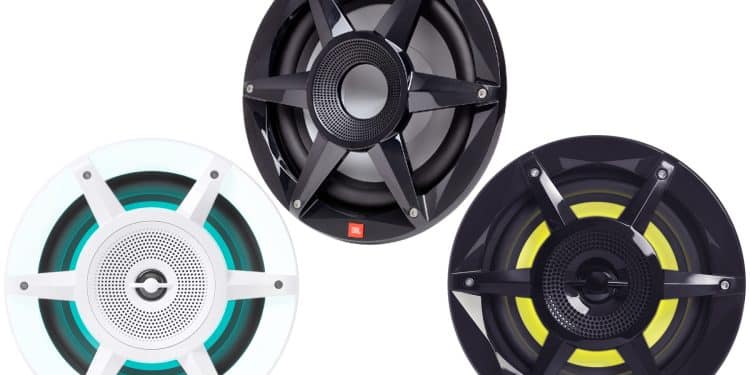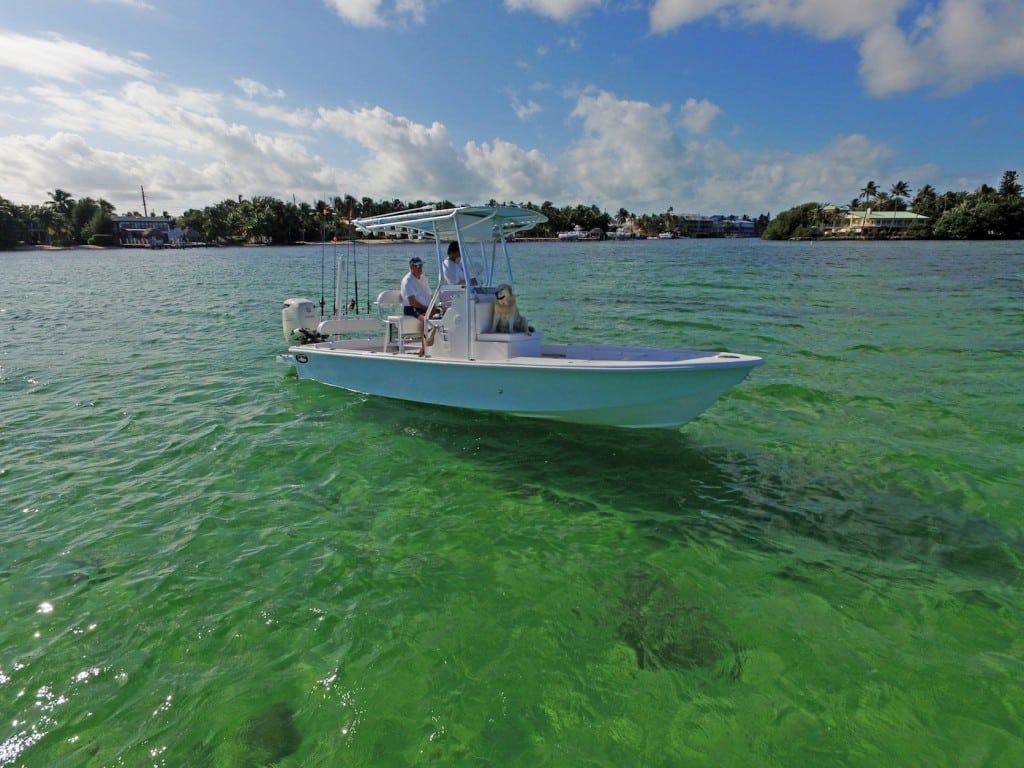Superior Sights & Sounds: Upgraded Marine Audio Systems
High-speed streaming delivers the best in entertainment.
The voluntary disengagement from all things landlocked is what boaters want most, and boating offers an escape from the humdrum of shore-based life. Yet, when it comes to movies and music while cruising, seclusion-seekers still want to access their entertainment just like at home—by streaming, whether it’s Netflix, Spotify, or another service. Upgrading your internet, visual, and marine audio systems can be easy.
Got Download Speed?
It takes reliable Internet to make that happen, which isn’t easy to come by if you are 100 miles offshore or off a remote island where cellular service or the marina’s Wi-Fi isn’t available.
That’s changing thanks to the famous disrupter, Elon Musk, who launched Starlink Maritime. The company offers low-latency Internet with up to 350 Mbps download. Starlink began in the fall of 2020, using more than 2,000 satellites launched by SpaceX.
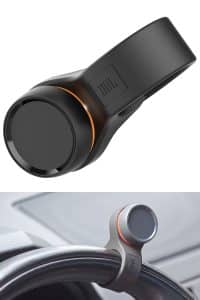
The advertised cost is $5,000 a month with a one-time hardware cost of $10,000 for two high-performance terminals and is an alternative to VSAT communications. The cost for Starlink is at a price point not foreign to charter captains and yacht owners. The hope is that as Starlink grows, the costs will come down.
“Starlink is launching low-orbit satellites to create a global network,” explains Darren Coleman, owner of Yacht Entertainment Solutions of Fort Lauderdale, Florida, a full-service audio/visual installation and service company. “Starlink’s goal is to have Internet coverage around the globe. With a chain of satellites constantly orbiting, as long as there is open sky, you can have super-fast speed.”
Download speeds from Starlink of 350 Mbps is in the same range as what cable providers like Spectrum provide for home use. While Netflix videos stream just fine with only a download speed of 6 Mbps, having 350 Mbps for the vessel’s entire wireless network will allow all guests on board to access the Internet without delays.
“Guests can then get their Pandora, Spotify, Apple Music, and all the video streaming from Amazon, Hulu, and Netflix,” Coleman says. “It will be just like on your living room couch, and then you can settle down to watch your favorite programs in the salon, your cabin, or on the flybridge.”
The Delivery
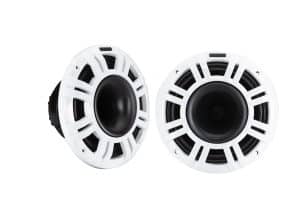
“KMXL is the newest speaker from KICKER Marine Audio, combining efficiency and high-power handling while delivering the classic KICKER sound,” says Phil White, KICKER Marine’s unit director for marine audio systems. “The KMXL speaker line is available in three sizes to fit popular speaker cutout locations and sizes.”
White says that while streaming provides additional programming options for the consumer and for many is the preferred media source, it hasn’t drastically changed the marine audio business.
“From KICKER’s standpoint, people have wanted tunes for their life on the water seemingly forever, certainly as long as we have been designing and building mobile audio systems,” White says. “Streaming does make it easier to get out, as you don’t need to tote along your CD case, and all KICKER Marine Audio’s components have Bluetooth capability.”
Bluetooth has evolved and improved to become a trusted way to deliver music specific to where guests are located. Bluetooth 5.0 standards bring better wireless range, higher speeds, greater broadcasting capacity, and more efficient low-energy audio.
“Due to part shortages and supply chain woes, redesigns were needed, so audio components have indeed improved over the last year,” explains Josh Berry, vice president of sales and marketing of Prospec Electronics. “Improvements range from the latest generation of Bluetooth 5.0 to more efficient circuit boards to new cosmetics.”
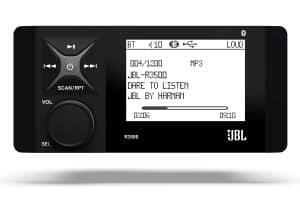
“From an alluring industrial design to two price points, the two models offer something for everyone,” Berry says. “In addition, another popular product currently is the JBL Click. The Click is a complementary all-weather Bluetooth controller/remote for smartphones that can be installed on the steering wheel for fingertip audio controls.”
For larger cruising boats with staterooms, salons, aft decks, and other social zones, Bluetooth is an effective way to personalize the listening experience.
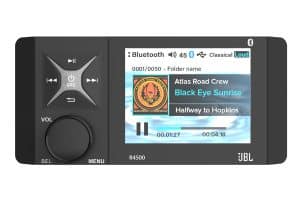
Establishing a local wireless network on board the boat is also a way to distribute music for guests throughout the boat, via technology such as Apple Airplay. Apple Airplay offers the option to listen throughout the boat without being in short range of a speaker, like with Bluetooth. It allows you to walk around the whole boat and listen to music as long as you are connected to the local network.
Weatherproofing
For movies and TVs, more guests would like to watch programs outside, but the sun and weather can make that difficult. Boat owners searching for premium audio and video in outside areas must overcome wind noise and the damaging effects of sun and saltwater on electronics. JBL’s new marine Stadium Speakers have UV-resistant grilles that are sealed from moisture and can withstand extreme temperatures. Weatherproofing is also key to protect equipment outside.
“IPX ratings are an excellent way to provide weatherproofing context as consumers are very savvy when it comes to understanding the nuances of marine audio,” Berry says. “By providing IPX ratings, it instills confidence that the product that is about to be purchased will last in the tough marine environment for years to come. Our latest WAKE series meets IPX7, which means the faceplate can be submerged in water. Granted, if that happens with a marine stereo, you have more problems than worrying if your tunes are still playing.”
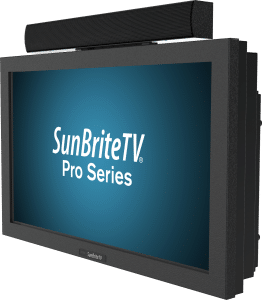
This past spring, SunBrite launched its first smart-enabled outdoor TV, the Veranda 3, for full-shade installations. In addition to a vibrant, high-brightness display, the Veranda 3 is fully equipped with Android TV and built-in Wi-Fi, allowing boat owners to access their favorite entertainment without a wired LAN connection.
Boat owners should consider the TV’s installation location when deciding whether to invest in an outdoor TV. Different environments require appropriate product capabilities, such as greater brightness, heat resistance, and anti-glare for areas with greater sun exposure.
Beat the Interference
Amplifiers, better speakers, and weatherproofing have helped counter the challenges of outdoor listening. The Achilles’ heel with Bluetooth and Wi-Fi on boats is that the bulkheads, doors, multiple levels, different metals, and frequency interference from other equipment really causes problems.
“I am not a huge fan of going completely wireless,” Coleman says. “If an owner wants reliable entertainment throughout the yacht, a wired system is the best. We can get creative doing refits, based upon the existing infrastructure without tearing the owner’s boat apart.
“It can be a tedious process to find out where all the wires and cables are connected to,” Coleman continues. “Often, it’s not labeled very well, and then if you have to start tearing into headliners and woodwork, you have to have a clear plan of how far to go.”
Once that plan comes together and is done right, the audio and video experience on a boat can complement the natural setting of being on board a boat.
Music, television, and the sights, smells, and sounds of the water can be a perfect mix.
-by Doug Thompson


